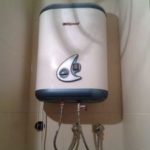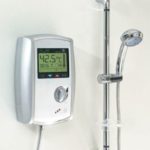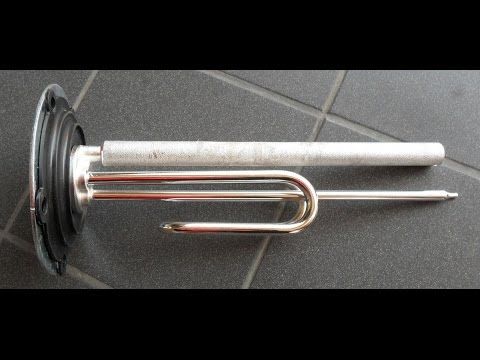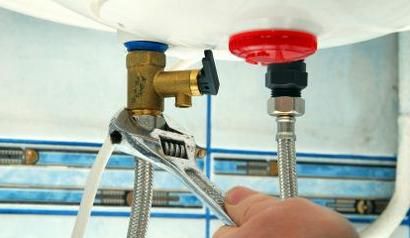Installation and connection of instantaneous water heater
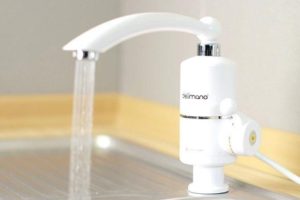 A water heater is a household appliance necessary in country houses where there is no centralized water supply, and also useful for use in city apartments during a short-term shutdown of hot water due to maintenance or accidents.
A water heater is a household appliance necessary in country houses where there is no centralized water supply, and also useful for use in city apartments during a short-term shutdown of hot water due to maintenance or accidents.
Below are the aspects of installation and connection of flow-through heating devices to the water supply system.
The content of the article
Instantaneous water heater design
Before you start connecting, you need to familiarize yourself with the device and the operating principle of the device.
There are several design options for instantaneous water heaters, differing in minor installation nuances that affect the performance characteristics. The principle of operation remains the same - cold water from the system enters the device inlet, passes through the heating element, reaches the set temperature level and goes out.
In this case, the heater control system turns on heating only during the passage of liquid, and also regulates the heating intensity depending on the mode set by the user.
The heating element can be directly the heating element or special metal tubes made of brass or copper, which are heated by the heating element.
Materials needed for installation
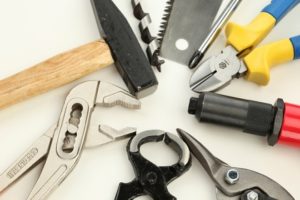 To quickly and efficiently install the device, you will need a certain list of tools and materials. There are two options for connecting storage water heaters - temporary and permanent.
To quickly and efficiently install the device, you will need a certain list of tools and materials. There are two options for connecting storage water heaters - temporary and permanent.
For temporary installation, in addition to the device itself, you will need:
- a hammer drill and a drill with a pobedit tip - for mounting on a brick or concrete wall (in the case of mounting on a wooden support - a drill and a corresponding drill bit);
- level for horizontal suspension;
- adjustable wrenches;
- pliers;
- set of screwdrivers, including indicator;
- water hose;
- copper electrical cable of appropriate cross-section;
- mounting kit (usually included with the device);
- dowels, screws;
- sealant for connecting hoses: tow with Unipac type paste or fumlent.
If a major installation is planned, you will additionally need to prepare:
- plumbing fittings for inserting into the main line - at least a tee for supplying water to the device;
- ball valve;
- flexible connection with union nuts for connecting the device to the system.
Preliminary work
Choosing a place to install the heater
Before you begin installation work, you must carefully consider the installation location. If a non-pressure device is purchased, then it must be installed in close proximity to the consumer (directly in the bathroom or kitchen). Typically, it is used to heat water in a shower or sink.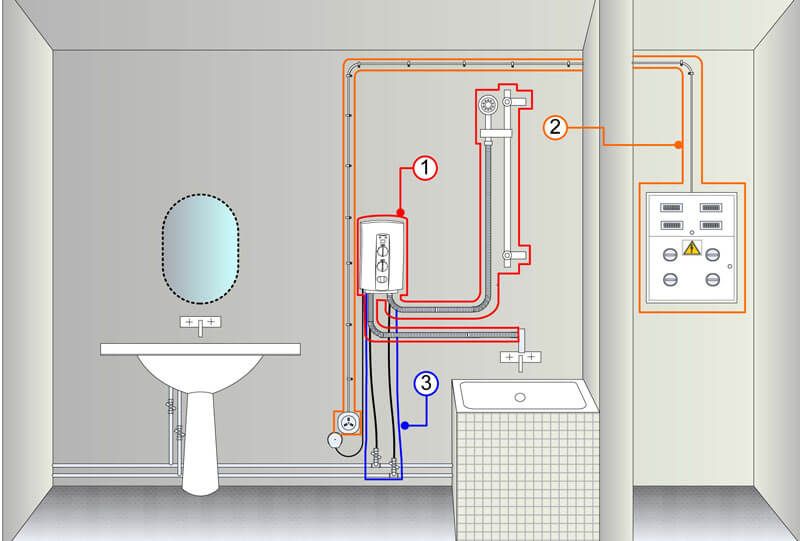
ATTENTION! When planning to install a flow-through heater in the shower, you need to choose a place protected from splashes. As a rule, they try to mount the device above the level of the shower head, outside the plane of the water jets.
Despite the IP24 protection class of the enclosures, it is strictly not recommended to install the device in places where there is direct contact or accumulation of liquid.
Water heater connection diagram
After choosing the installation location, it is necessary to provide electrical preparation. When turning on a device operating from a 220 V network, a three-core cable is supplied, which is connected to the protective grounding device from the panel side. Connecting other consumers to this electrical network is not advisable.
In the case of permanent installation of a pressure model, it is advisable to choose an installation location next to the cold water riser. As part of the preparatory measures, in addition to supplying electricity, it is necessary to make changes to the water supply system:
- connect a piece of liner to the cold water supply pipe through a tee to the installation location of the device;
- install shut-off valves (faucet) in this area;
- It is recommended to install a fine filter before supplying water to the device inlet;
- lower the pipe from the outlet of the device to the hot main, also connecting it through a tee.
In such a scheme, if there is no hot water in the main, it is necessary to close the inlet valve, while opening the tap towards the supply of cold water to the instantaneous water heater. If it appears, you must perform the steps in reverse order: turn off the heater tap, then open the valve on the main line.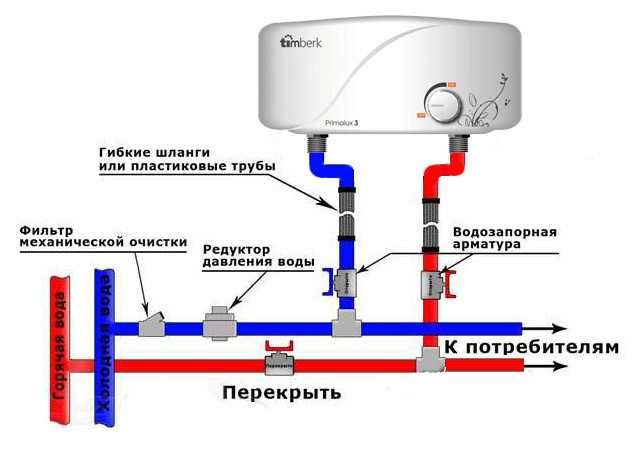 After connecting electricity and water supply, you can begin the main installation.
After connecting electricity and water supply, you can begin the main installation.
IMPORTANT! Before starting installation work, make sure that the selected section of the wall to which the device will be attached has sufficient load-bearing capacity. It is not recommended to install even the smallest devices on walls made of plasterboard or plywood.
Installation of a water heater and connection to the network
The sequence of steps for commissioning a backup water supply system using an instantaneous heater is as follows:
- Make markings to mount the device to the wall. To ensure that the device is fixed horizontally, use a level.
- Make holes using a hammer drill or drill. Place dowels of the appropriate diameter in them.
- Place the heater body against the mounting location. Secure it with a screwdriver or screwdriver.
- Connect the device to the cold and hot water pipes alternately. Remember to use gaskets and sealing materials where necessary.
- Having opened the supply tap and turned on the hot water on one of the consumers, flush the device to de-air it.
- Create pressure in the system by turning off the taps on the consumer side, and make sure there are no leaks at the points where the device is connected to the water.
- Check that the power supply cable is de-energized. Connect all three wires to the terminals in accordance with their markings: N – zero, L – phase, ┴ – ground.
- Turn on the machine in the control panel. Check the operation of the device.
- If the heater operates correctly, complete the installation by securing the housing cover with screws or clamps.
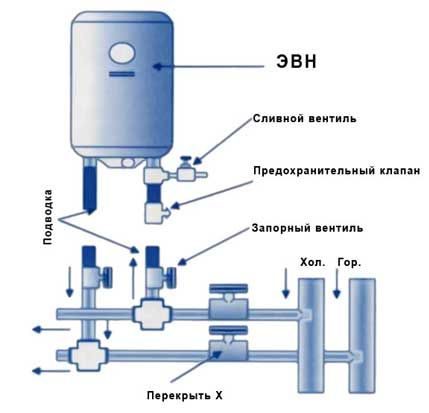
ATTENTION! It is strictly forbidden to use the device in a network with missing or poor-quality grounding, as well as bypassing the RCD.If a leak occurs inside the device for any reason, the electrical protection will instantly operate and the potentially dangerous circuit will be de-energized.
Safety precautions
The combination of water and electricity, especially in open systems, always contains a hidden threat. When installing a instantaneous water heater, you must comply with all safety requirements, having first carefully read the installation and operating instructions included with the device.
It is necessary to ensure that the electrical wiring is safe, there is sufficient allocated power to connect the device, and the appropriate rating of the circuit breaker and RCD. If the wiring or elements of the switchboard equipment become very hot, the device cannot be used.
To avoid equipment failure, it is necessary to promptly change the filter at the inlet to the heater and ensure that there are no leaks.
Carry out preventive maintenance in accordance with the regulations, and carry out visual inspections from time to time during continuous operation.

